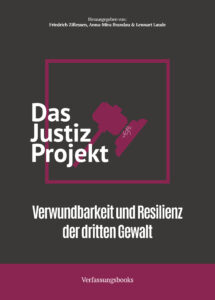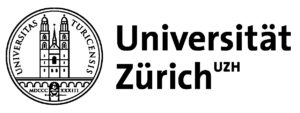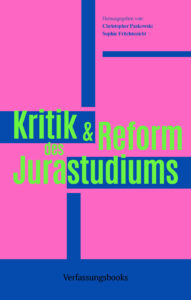NachrichtenBearbeiten
https://odysee.com/@ovalmedia:d/mwgfd-impf-symposium:9
https://totalityofevidence.com/dr-david-martin/
| | Kaum beachtet von der Weltöffentlichkeit, bahnt sich der erste internationale Strafprozess gegen die Verantwortlichen und Strippenzieher der Corona‑P(l)andemie an. Denn beim Internationalem Strafgerichtshof (IStGH) in Den Haag wurde im Namen des britischen Volkes eine Klage wegen „Verbrechen gegen die Menschlichkeit“ gegen hochrangige und namhafte Eliten eingebracht. Corona-Impfung: Anklage vor Internationalem Strafgerichtshof wegen Verbrechen gegen die Menschlichkeit! – UPDATE |
Libera Nos A Malo (Deliver us from evil)
Transition NewsBearbeitenFeed Titel: Homepage - Transition News Bundesregierung: Schwarz-Grün für Ricarda Lang „auf jeden Fall eine Option“
 Union und die Grünen wären nach Ansicht von Grünen-Chefin Ricarda Lang geeignete Koalitionspartner ab 2025. In drei Bundesländern gebe es bereits funktionierende Koalitionen. Baden-Württembergs Ministerpräsident Winfried Kretschmann hofft auf eine „Verbindung von Ökologie und Ökonomie“. Dengue-Fieber in Brasilien ausgebrochen: Kollabiert das Gesundheitswesen?
 Brasilien kämpft gegen den schwersten Dengue-Ausbruch seit Jahrzehnten. In mehreren Gebieten wurde der Notstand ausgerufen. Bank of America investiert wieder in fossile Brennstoffe
 Die Bank of America hat ihr Versprechen zurückgenommen, die grüne Agenda zu unterstützen und nicht mehr in Kohlenwasserstoffe – Kohle, Erdöl und Erdgas – […] Tucker Carlson bestätigt zum ersten Mal offiziell, daß es ein Interview mit Präsident Putin geben wird, und begründet ausführlich warum das nötig ist. Twitter/X
Tucker Carlson bestätigt zum ersten Mal offiziell, daß es ein Interview mit Präsident Putin geben wird, und begründet ausführlich warum das nötig ist. Twitter/X(Sobald eine deutsche Übersetzung vorliegt, wird das hier nochmal...
Umfrage der Bertelsmann Stiftung: Viele junge Deutsche misstrauen Regierung und Parlament
 Viele junge Deutschen zweifeln daran, ob die Politik künftige Herausforderungen lösen könne. Experten sehen darin ein Warnsignal für die Demokratie. | Peter MayerBearbeitenFeed Titel: tkp.at – Der Blog für Science & Politik Kernstücke der neuen WHO Verträge bringen Verlust der nationalen Souveränität der Mitgliedsstaaten
 Bekanntlich sollen bis Ende Mai Änderungen der Internationalen Gesundheitsvorschriften (IGV) beschlossen werden, die der WHO eine massive Ausweitung ihrer völkerrechtlich verbindlichen Vollmachten bringen sollen. […] Hardware-Schwachstelle in Apples M-Chips ermöglicht Verschlüsselung zu knacken
 Apple-Computer unterscheiden sich seit langem von Windows-PCs dadurch, dass sie schwieriger zu hacken sind. Das ist ein Grund, warum einige sicherheitsbewusste Computer- und Smartphone-Nutzer […] 25 Jahre weniger Lebenserwartung für "vollständig" Geimpfte
 Eine beunruhigende Studie hat ergeben, dass Menschen, die mit mRNA-Injektionen „vollständig“ gegen Covid geimpft wurden, mit einem Verlust von bis zu 25 Jahren ihrer […] Ostermärsche und Warnungen vor dem Frieden
 Ostern ist auch die Zeit der pazifistischen und antimilitaristischen Ostermärsche. Grund genug, um davor zu warnen. Tod nach Covid-Spritze: Ärzte im Visier der Justiz
 In Italien stehen fünf Ärzte nach dem Tod einer jungen Frau aufgrund der „Impfung“ vor einer Anklage. |
NZZBearbeiten
Feed Titel: Wissenschaft - News und Hintergründe zu Wissen & Forschung | NZZ
Vor 5000 Jahren gab es längst domestizierte Hunde. Auf einer kleinen Insel hielten die Menschen trotzdem Wölfe
INTERVIEW - Corona-Bilanz in Deutschland: «Es ist erschreckend, wie wenig wir zu den Massnahmen wissen»
22 Milliarden für die ESA: Europa stellt die Weichen für mehr Resilienz und Eigenständigkeit im Weltraum
Das Grippevirus ist in diesem Jahr besonders ansteckend – das ist ein guter Grund für eine Impfung
PODCAST «NZZ QUANTENSPRUNG» - Künstlicher Intelligenz droht auf der Erde der Strom knapp zu werden. Nun weichen die Techfirmen auf den Weltraum aus
VerfassungsblogBearbeiten
Feed Titel: Verfassungsblog
“As If They Were to Blame”
The numbers are shocking. The recently published Report on Gender-Based Offences Against Women in Germany 2024 shows that domestic violence has reached new record levels and that misogynistic offences are rising sharply. And yet the true scale remains hidden – most assaults never make it into any official record simply because they go unreported. Those who do turn to the police or even the courts face a system that promises protection but, for many, brings new harm: repeated confrontations with perpetrators, arduous evidentiary routines, and a structural mistrust that forces victims to recount their experiences again and again in the face of unspoken doubt. Justice Minister Hubig has set out a wide-ranging reform package, spanning tougher criminal laws and a guaranteed right to psychosocial support throughout legal proceedings. However, it is anything but certain that these measures will deliver real protection for women affected by intimate-partner and sexualised violence.
The International Day for the Elimination of Violence against Women on 25 November is an annual reminder of how grinding the struggle against this culture of violence remains. Whether at home, on the street or online, assaults are often concealed and dismissed, trivialised as a “private matter” or drowned out by other debates. The day of remembrance traces back to the murder of the Mirabal sisters, three political activists in the Dominican Republic, whose femicides in 1960 became a symbol of systematic violence against women.
Much has changed since then, yet the latest figures leave no doubt: 25 November is not about the past – it is a measure of the moment we are living in. We asked lawyer and author Christina Clemm why state institutions continue to fall short of their own commitments and what it would take for true change.
1. Ms Clemm, the push to strengthen protections for victims of gender-based violence has gained fresh momentum – including political proposals for electronic ankle monitors and for making catcalling or voyeurism separate criminal offences. Which of these, to your mind, are mostly symbolic and unlikely to change much in practice?
The ankle monitor may hopefully prevent a few highly dangerous perpetrators from killing or seriously injuring their former partners. But let’s be honest: it is not a breakthrough in combating gender-based violence. The same is true for creating new criminal offences that will, in practice, lead to very few convictions. What’s missing is a comprehensive strategy and genuine political will to combat gender-based violence at every level, as the Istanbul Convention requires. That means prevention, education, protection, proper prosecution, and compensation.
++++++++++Advertisement++++++++++++
PostDoc-Stelle mit Habilitationsmöglichkeit (Oberassistenz) im Handels- und Wirtschaftsrecht – Uni Zürich
Ab 1.12.2025, Pensum 80-100%, Bewerbungsschluss 15.12.2025
Anforderungen: Dissertation, Eignung und Wille zur Habilitation.
Vollständige Bewerbungsunterlagen an Prof. Picht (peter.picht@ius.uzh.ch)
Wir freuen uns auf Ihre Bewerbung!
Weitere Informationen hier.
++++++++++++++++++++++++++++++++
2. As a lawyer, you deal with cases where digital abuse spills over into the physical world. Where do you see the most urgent gaps in the law between online and offline realities?
The capacity to investigate thoroughly and promptly is disastrous. I deal with numerous cases in which it is blatantly obvious that the suspects’ digital devices should be searched and analysed – and yet nothing happens. I represent victims who are digitally monitored and stalked by their ex-partners, secretly filmed, or threatened with the release of consensually recorded intimate videos if they dare to separate. Protecting them is nearly impossible. And then there are women and queer people who face endless waves of hate on social media, often in the form of sexualised threats. Some withdraw from public life because they are simply not protected.
3. You work with victims of gender-based violence and their families, including in femicide cases – and even coming forward in the first place can require extraordinary courage. What day-to-day barriers do victims run up against when dealing with the police and the justice system? And what needs to change beyond training programmes?
Mandatory training would be a start. Many victims report that officers do not take them seriously when they file a complaint, questioning them as though they themselves had done something wrong. The familiar queries – why they didn’t leave their violent partner earlier, what they were wearing before the rape, why they didn’t keep a closer eye on their drink – must finally stop, or at least be properly contextualised. Victims are often severely traumatised; this is acknowledged, but rarely taken into account. Far too many are retraumatised by the proceedings. And within the judiciary? We would likely need specialised units to ensure genuine expertise in gender-based violence. At present, it is a matter of chance whether a case ends up before judges with the necessary expertise or those guided by patriarchal narratives and myths.
++++++++++Advertisement++++++++++++
Kritik und Reform des Jurastudiums
Christopher Paskowski & Sophie Früchtenicht (Hrsg.)
Die Rechtswissenschaft steht vor zahlreichen Herausforderungen, von den Gefahren des autoritären Populismus bis hin zur Bekämpfung der Klimakrise. Gleichzeitig spiegeln sich zahlreiche gesellschaftliche Probleme noch nicht ausreichend in der juristischen Ausbildung wider. Das Verfassungsbook “Kritik und Reform des Jurastudiums” verortet die Diskussion um die Reformbedürftigkeit des Jurastudiums im größeren gesellschaftlichen Kontext und macht dabei auch marginalisierte Perspektiven sichtbar.
Die Digitalausgabe des Sammelbands steht auf unserer Website kostenfrei zur Verfügung; die Printausgabe ist im deutschen Buchhandel erhältlich.
++++++++++++++++++++++++++++++++
4. Your books show that the issue isn’t individual incidents but a social climate that makes violence possible. Should “justice” in cases of gender-based violence be understood in broader terms than guilt and punishment? And do you see alternative approaches?
Criminal proceedings on their own can’t address the scale of gender-based violence. Victims need protection, recognition of the harm they have suffered and adequate compensation. They must receive psychosocial support swiftly, so they can overcome the sense of powerlessness and regain safety. This applies not only to victims of gender-based violence, but also racist or ableist violence. We need society-wide processes, solidarity with victims, state compensation and effective work with perpetrators. Right now, the opposite is happening. For example, the compensation fund for victims of sexualised violence in childhood has been completely discontinued, crucial prevention projects and youth social work are being cut, and poverty and homelessness are worsening. Yet we know that good social policy is the best crime prevention. And to inflame racism, people claim that sexualised violence is a problem of migration – rather than a problem of a patriarchal society.
5. And finally, on a more optimistic note: is there any legal or social development that inspires hope?
I’m not sure “hope” is quite the right word right now. We see authoritarian and fascist movements gaining ever more ground. All the more reason to speak out now – for equality and against hatred. And yes, knowing that many others share that commitment does give me some confidence.
*
Editor’s Pick
by MAXIMILIAN STEINBEIS

© Archiv Grünes Gedächtnis der Heinrich-Böll-Stiftung e.V. / mit freundlicher Genehmigung von John Kelly
In 1979, when Kelly ran as the lead candidate for the (officially not yet founded) party The Greens in the European elections, I was nine years old. I am now roughly the age that all those West German men were back then, the ones who from the moment she first appeared on the political stage until her violent death in 1992, hated, desired, protected, fought, feared, ridiculed, belittled, demonized, pathologized, and idolized this woman more intensely than almost anyone else of that era. One of them, her companion in life and politics, Gerd Bastian – the soldier and Bundeswehr general turned peace activist – ultimately became her killer. She remained in memory, if at all, as a victim, and indeed a victim not of the violence of those with whom and against whom she fought, but of her own radicalism. Anyone who wishes to free themselves from this misconception is strongly encouraged to watch this excellent documentary about her life and death, currently available in the ARTE online library.
*
The Week on Verfassungsblog
summarised by EVA MARIA BREDLER
A single day dedicated to violence against women cannot begin to capture how routine such violence is: in Germany, almost every day a woman is killed by her (ex-)partner. It is widely acknowledged that this is a structural problem – and yet we still wait for statistics before taking action. Now two new German studies on femicide have been published, one from North Rhine-Westphalia and one from Tübingen. But statistics have their limits. TAMARA CANDELA (GER) explains why police data are insufficient and why only a structural perspective reveals the true scale of the problem.
CIGDEM ILERI-KÖKSAL (GER) draws attention to an overlooked form of violence against women: economic violence, defined as the deliberate control of financial resources in order to restrict a woman’s freedom of action. Although the Istanbul Convention requires action, this form of violence is still barely recorded or addressed in Germany.
At least the Basic Law protects from severe economic hardship by guaranteeing an existential minimum in accordance with human dignity (“menschenwürdiges Existenzminimum”). But the German government now aims to fundamentally reform the Bürgergeld: sanctions are to be tightened, and the grace period for housing costs abolished. NARIN ARSLAN (GER) recalls the constitutional standards at stake and warns of a troubling systemic shift.
It is often women, particularly single mothers, who fall into economic hardship. One of the many reasons is the gendered reality of parental leave: in 2024, nearly 75 per cent of the entitled women but just over 25 per cent of men took parental leave and received parental allowance. A public-sector employee has now lodged a constitutional complaint because her parental leave delayed her regular pay-grade advancement by twelve months. The complainant considers this discrimination on grounds of sex; ANGIE SCHNEIDER (GER), however, sees little chance of success.
Parental leave can affect reproductive self-determination when women decide not to have children due to the economic and professional constraints it entails. But reproductive autonomy is also directly restricted by law. In Austria, for example, so-called “social egg freezing” was long prohibited, despite being permitted in many other European countries. The Austrian Constitutional Court has now overturned this ban. A significant step for reproductive autonomy, argues MAGDALENA FLATSCHER-THÖNI (GER).
Poland, by contrast, is moving backwards in terms of reproductive autonomy. In 2020, the Polish Constitutional Tribunal outlawed abortions on the grounds of foetal defects. Although the ruling was announced, it was not published for three months. The ECtHR has now held that the legal uncertainty thus created violates Article 8 ECHR. KAROLINA KOCEMBA (ENG) analyses the judgment and the deeper dynamics of legal uncertainty surrounding reproductive rights.
Neighbouring Slovakia is likewise grappling with uncertainty in its health system: priests may now enter hospitals without restriction – even without patient consent. HENDIK MATHIS DRÖßLER and RICHARD PATASSY (ENG) examine the new legal grey zones and warn that this episode of “Grey’s Autonomy” violates the ECHR.
The German Federal Constitutional Court has also dealt with access rights, albeit in a very different context: a journalist was alleged to have supported the banned platform linksunten.indymedia – according to the Court, this does not justify searches of his editorial office or private home. An important signal for press freedom; yet the decision leaves an important doctrinal tension unaddressed, KATHARINA LEUSCH (GER) argues.
The platforms linksunten.indymedia and LinkedIn may sound similar but could hardly be more different. The Tenth Senate of the Berlin Court of Appeal has now narrowed at least the constitutional distance by placing LinkedIn under the protection of freedom of expression, following the Federal Court of Justice’s Facebook rulings of 2021/2022. For JAKOB KNAPP (GER), the Senate thereby misconstrues freedom of expression.
++++++++++Advertisement++++++++++++

Das Justiz-Projekt: Verwundbarkeit und Resilienz der dritten Gewalt.
Friedrich Zillessen, Anna-Mira Brandau, Lennart Laude (Hrsg.)
Wie verwundbar ist die unabhängige und unparteiische Justiz? Wo lässt sich Sand in das Getriebe der Justiz streuen? Welche Hebel haben autoritäre Populisten, Einfluss zu nehmen, Abhängigkeiten zu erzeugen, Schwachstellen auszunutzen?
In rund 70 Gesprächen mit Expertinnen und Experten aus der Praxis haben wir untersucht, welche Szenarien denkbar sind – und was sie für die Justiz bedeuten könnten. Unsere Erkenntnisse veröffentlichen wir nun in „Das Justiz-Projekt. Verwundbarkeit und Resilienz der dritten Gewalt”.
Verfügbar ab dem 2. Dezember, hier auf dem Verfassungsblog – wie immer: Open Access!
++++++++++++++++++++++++++++++++
There was also news on the democratic sister right, freedom of assembly: shortly before planned sit-in blockades against the establishment of a new AfD youth organisation, the Federal Constitutional Court ruled that the freedom of assembly also protects participants in sit-ins. ANTONIA REERMANN and JAKOB WAGNER (GER) welcome the decision but see a need for further clarification. ANNA-SOPHIE HEINZE (GER) has taken a closer look at the AfD youth organisation and identified ideological and personal continuities with the Junge Alternative.
Such continuities also mark the presidential elections in Tanzania: President Samia Suluhu officially won 97.66 per cent of the vote, yet observers criticised the election as undemocratic. The fact that the African Union Commission nevertheless issued a congratulatory statement points, for EDWARD KAHUTHIA MURIMI (ENG), to a deeper problem: the AU’s norms do not protect against undemocratic elections orchestrated by incumbents.
A new German legislative proposal also raises democratic concerns: the draft would allow “safe countries of origin” to be designated by executive decree rather than by statute – thereby bypassing democratic scrutiny and weakening core safeguards for asylum seekers, argue LENA RIEMER and DARREN JAY SEIFFERT (ENG).
Meanwhile, the European Parliament has adopted the Omnibus I Directive – with the support of the EPP, which aligned itself with the far right. The Directive aims to “simplify” corporate sustainability reporting but is criticised as an undemocratic project that undermines sustainability goals. JIE OUYANG (ENG) considers this U-turn by the Commission a triumphant comeback for a resilient neoliberal EU.
In line with this, the EU’s planned 2040 climate target is markedly unambitious, as KATI KULOVESI and SEBASTIAN OBERTHÜR (ENG) note in their overview: the target falls short of international fairness standards and weakens important provisions of existing climate legislation.
One EU Member State is particularly confronted with its environmental sins: France conducted decades of nuclear testing in the Pacific, and hundreds of thousands of EU citizens are still waiting for compensation for radiation exposure. IGNACIO PORTELA GIRÁLDEZ (ENG) urges France to finally address this unresolved nuclear legacy.
And so Faulkner was right that “the past is never truly dead, it’s not even past” – whatever form violence takes, it demands a daily reckoning.
*
That’s it for this week. Take care and all the best!
Yours,
the Verfassungsblog Team
If you would like to receive the weekly editorial as an e-mail, you can subscribe here.
The post “As If They Were to Blame” appeared first on Verfassungsblog.

